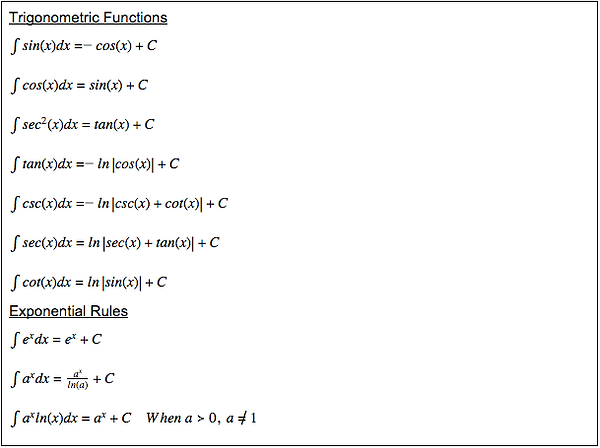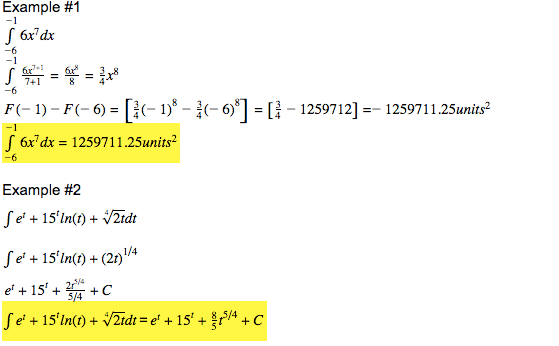
What Are Antiderivatives?
An antiderivative is the indefinite or definite intergral of a function. It is the reverse of finding the derivative. The definte integral of a function could be used to calculate the area under the curve bounded between specified boundaries. The indefinte integral of a function could be used to generate an equation that models the area under the curve.
Antiderivative Rules


Note: The C value is called the Constant of Integration. It represents a certain constant that might have been removed. For example, the derivative of x^3+4 is 3x^2 and the derivative of x^3 is 3x^2 as well. So when we find the integral, we only know 3x^2. However, there could have been a constant.
Note: You can not take the derivative of the integral of x^-1 because if you add 1 to the exponent and then divide the function with the new exponent, it will be undefined. So, you should always drop the x down and take the integral of 1/x instead.


Finding Definite Integral
-
Find the antiderivative of the function using the rules above.
-
Use the formula, F(b)-F(a).
where b represents the upper boundary and a represents the lower boundary.
Finding Indefinte Integral
-
Find the antiderivative of the function using the rules above.
-
Add C to the antiderivative.